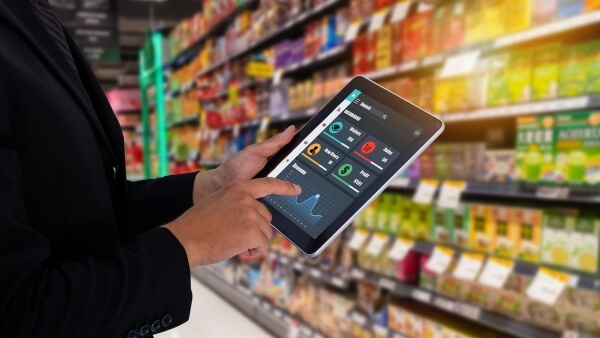Welcome to our blog! Today, let’s explore the fascinating world of retail marketing. Have you ever wondered what exactly retail marketing is and how it can be done effectively? If yes, you are in the right place.
This post dives deep into retail marketing, its importance for businesses, how to implement it effectively, and the latest trends and innovations.
So, let’s begin our learning journey. Come with us!
What is retail digital marketing?
Retail digital marketing is a set of strategies and tactics to attract and retain customers in the retail sector. It is a vital aspect of the retail business as it promotes products or services directly to consumers.
That’s where retail digital marketing techniques involve everything from product presentation to the customer’s in-store experience.
With the growing competitiveness in the business world, digital retail marketing has become necessary to survive and thrive.
But how to do retail digital marketing effectively? Keep reading to find out.
How important is digital retail marketing for companies?
Retail digital marketing is critical for businesses as it plays a vital role in attracting and retaining customers.
It focuses on promoting products and services directly to consumers, aiming to increase sales and profitability.
Retail digital marketing strategies can range from choosing the store location to creating a memorable shopping experience for the customer.
Furthermore, digital retail marketing helps reinforce brand identity and build lasting consumer relationships.
How do you do retail digital marketing?
You need to follow some strategic steps to carry out effective retail digital marketing. First, conduct in-depth market research to understand your target audience and industry dynamics.
Then, segment your audience, build a strong brand, and establish a robust online presence.
Furthermore, developing attractive content strategies, focusing on the customer experience, implementing loyalty programs and promotions, adopting strategic pricing, and integrating your sales channels is essential.
Other important aspects include influencer marketing, sales promotion strategies, data analysis, team training, constant updating, and performance evaluation.
Finally, being aware of the latest trends and innovations in retail digital marketing is essential.
1. Market Research
Market research is the essential first step in digital retail marketing. It involves collecting and analyzing information about the market, including customers, competition, market trends, and more.
Market research can help retailers better understand their customers, identify business opportunities, and make informed decisions.
It can be carried out through various techniques, such as surveys, interviews, observation, and data analysis.
Market research is a powerful tool that can give retailers a competitive advantage in the market.
2. Audience Segmentation
Audience segmentation is an essential strategy in retail digital marketing. It’s about identifying and analyzing the profile of your target audience and understanding their needs, desires, behaviors, and consumption habits.
Segmentation allows you to direct your marketing actions more assertively, creating campaigns and offers that really meet the demands of your audience.
Furthermore, it contributes to optimizing the company’s resources, as it avoids spending on strategies that do not bring returns.
For effective segmentation, it is important to conduct market research, create personas, and use data analysis tools. Remember: knowing your audience is the first step to winning them over.
3. Building a Strong Brand

Building a strong brand is a crucial element in retail digital marketing. To stand out in a competitive market, your brand needs to be memorable and convey trust. This starts with the brand identity – the name, logo, colors, and slogan.
But it goes beyond aesthetics, involving the brand’s personality and the values it represents.
By building a strong brand, you create an emotional connection with your customers, which can lead to greater brand loyalty and advocacy. Remember, a strong brand is not just known; it is loved and respected.
So, invest time and resources into building a brand that stands out and resonates with your target audience. This could be the difference that leads to the success of your retail business.
4. Online Presence
Online presence has become a crucial component of retail digital marketing. Regardless of size or industry, every business needs a strong online presence to reach its target audience. This includes having an SEO-optimized website, being active on social media, and utilizing email marketing efficiently.
An online presence increases your brand’s visibility and allows you to connect and interact with your customers personally.
Additionally, an online presence makes collecting data on customer habits and preferences easier, allowing you to refine your retail digital marketing strategies to meet your customers’ needs better.
A strong online presence can be the key to the growth and success of your business.
5. Content Strategies
Content strategies are a crucial aspect of retail digital marketing. Through content, the brand communicates its mission, values , and products to its customers.
Content can be presented in many forms – blogs, videos, social media posts, newsletters, and more.
It is important because it is relevant and attractive to the target audience. When creating a content strategy, clearly defining your target audience, interests, and needs is important.
Then, you can create content that attracts and engages those customers. Remember, content isn’t just about selling, it’s also about providing value and building relationships.
Content strategies are also important for SEO. Seo for e-commerce, for example, it is almost mandatory. This aid increases your brand’s online visibility.
Therefore, invest time and resources to create and implement effective content strategies for your retail business.
6. Customer Experience
Customer experience is a crucial component. It refers to how the customer feels about your brand and products. A good customer experience can lead to increased brand loyalty, customer satisfaction, and sales.
In the digital world, customer experience can be enhanced through an intuitive user interface, fast and efficient customer service, and personalized content.
Businesses should strive to create exceptional customer experiences, as this can set them apart from competitors.
7. Loyalty Programs and Promotions
Loyalty programs are an excellent retail digital marketing strategy to keep customers engaged. These programs reward customers for their repeat purchases, encouraging them to continue purchasing from you.
Additionally, promotions are an efficient way to attract new customers and encourage larger purchases.
You can significantly increase your sales and profits by offering discounts or special offers. However, it is important to ensure that these strategies do not harm your profit margin.
The key is finding the right balance between attracting customers and maintaining a healthy profit margin. Remember, the goal is to add value to the customer and your business.
8. Strategic Pricing
Strategic pricing is a crucial retail digital marketing tactic for attracting and retaining customers. The idea is to determine the balance point between the cost and the value perceived by the customer so that the product’s price is attractive without compromising the company’s profit margins.
It is essential to consider factors such as production costs, market demand, competition, and customer perception of value to achieve this.
Well-designed strategic pricing can be a powerful competitive differentiator, directly influencing the consumer’s purchasing decision.
Furthermore, strategic pricing is a valuable tool for optimizing business profitability by efficiently balancing prices charged with operational costs.
However, strategic pricing is not an exact science and requires constant review and adjustments according to market dynamics.
9. Channel Integration
Channel integration is a crucial strategy in retail digital marketing. Businesses must ensure a consistent, frictionless experience for customers, regardless of the channel they choose.
This includes physical stores, websites, social media, email, and mobile apps.
A Channel integration enables a unified view of the customer, which makes it possible to personalize the customer experience, improve operational efficiency, and increase sales.
The secret effective channel integration ensures that all communication channels are aligned and working together to provide a seamless, high-quality customer experience.
10. Influencer Marketing
Influencer marketing has become an extremely effective strategy for companies that want to expand their visibility and credibility in the market, of course, marketing para e-commerce.
This type of marketing involves partnering with digital influencers, who have a loyal and engaged audience, to promote products or services.
The main advantage of this strategy is the possibility of reaching a larger and more segmented audience, as influencers have followers who trust them and value their opinions.
Furthermore, influencer marketing can help improve a brand’s image and increase its authority in the market, as influencers are generally seen as experts in their respective niches.
Therefore, choosing influencers aligned with the company’s values and target audience is essential to ensure the strategy’s success.
11. Sales Promotion Strategies
Sales promotion strategies are a fundamental part of digital retail marketing.
They include several tactics that aim to increase sales, whether through discounts, gifts, or loyalty programs, among others. In the digital universe, these strategies may include exclusive promotions for followers on social media or for newsletter subscribers.
When implementing sales promotion strategies, it’s crucial to ensure they are relevant and appealing to your target audience, as well as aligned with your brand image.
Remember, the goal is to not only increase sales in the short term but also to build lasting relationships with customers.
Data analysis can be extremely useful in this process, allowing you to understand consumer behavior better and customize your offers accordingly.
12. Data Analysis
Data analysis is a crucial part of retail digital marketing. Through it, it is possible to understand consumer behavior, identify trends, and make accurate predictions. Using data analysis tools can provide valuable insights that help you optimize your marketing strategies.
Tracking metrics such as conversion rates, average sales, and website traffic can help you evaluate the performance of your strategies and make adjustments as needed.
Furthermore, data analysis allows you to test different approaches and identify the best results, making your marketing campaigns more efficient and effective.
13. Team Training
In retail digital marketing, team training is critical to ensuring everyone in the organization is aligned with marketing and sales objectives.
This involves teaching technical skills, such as how to use digital marketing tools, and interpersonal skills, such as customer service and negotiation.
Training the team is investing in the success of the business, as a well-trained team can identify opportunities, deal with challenges, and execute marketing strategies effectively.
Furthermore, team training contributes to employee engagement, as they feel valued and prepared to contribute to the company’s growth.
Remember, a well-trained team can be the difference that puts your company ahead of the competition in the retail market.
14. Constant Update
Constant updating is vital in retail digital marketing. Changes in consumer behavior, market trends, and technology require companies to stay up to date.
This includes regularly reviewing marketing strategies, keeping up with the latest trends, and adapting to new technologies.
Additionally, quickly adapting to changes can provide a significant competitive advantage. Therefore, it is essential to invest in continuous learning and development.
After all, those who cannot keep up with the changes risk being left behind. Therefore, staying up to date is not just an option but a necessity in today’s retail environment.
15. Performance Assessment
Performance evaluation is a crucial tool in retail digital marketing. It allows companies to evaluate the success of their strategies and identify areas where improvements may be needed.
Performance evaluation may include analyzing sales metrics, customer feedback, and marketing communication effectiveness.
It is important for companies to conduct performance reviews regularly to ensure their marketing efforts are producing the desired results.
Additionally, performance measurement can help identify emerging trends that can be leveraged for future campaigns.
Remember, the goal of retail digital marketing is not just to attract customers but also to ensure they keep coming back.
Trends and innovations in retail digital marketing
As the world evolves, new trends and innovations emerge in retail digital marketing to meet consumers’ ever-changing demands.
This section will explore some of these innovative trends that are revolutionizing the retail industry. From social commerce to sustainability and social responsibility, these trends are shaping the future of retail digital marketing.
Let’s go?
1. Social Commerce
Social commerce is an emerging trend in digital retail marketing, combining social media with e-commerce.
Rather than directing consumers to an external website to make a purchase, social commerce allows them to do so directly from the social media platform they are using.
This provides a more streamlined and integrated shopping experience, encouraging more conversions and sales.
Social media platforms like Instagram and Facebook already offer social commerce options, making it an essential strategy for any retail business that wants to reach and engage its target audience effectively.
2. Augmented (AR) and Virtual Reality (VR)
Augmented Reality (AR) and Virtual Reality (VR) are trends that are gaining more and more space in retail digital marketing.
They allow you to create immersive and personalized customer experiences, providing a deeper interaction with products and the brand.
For example, Augmented Reality can be used to allow customers to virtually “try on” clothes or furniture before purchasing, while Virtual Reality can be used to offer virtual tours of stores or introduce new products in innovative ways.
When used well, these technologies can help increase customer satisfaction and boost sales.
3. Contactless Payments and Financial Technologies
Technological advances are rapidly transforming the retail sector, particularly regarding payments. The trend is for contactless payments and financial technologies to become increasingly common.
This innovation offers customers a faster and safer shopping experience, increasing efficiency and reducing queues.
Additionally, it allows retailers to collect data on customer purchasing habits, allowing for a more detailed analysis of consumer behavior.
However, to make the most of this trend, it is important for companies to be aware of regulatory changes and security challenges that may arise.
4. Real-Time Personalization
Real-time personalization is an innovative trend in retail digital marketing that has transformed the customer experience.
With the help of advanced technologies and data analytics, companies can now personalize the customer experience in real-time, instantly responding to their preferences and behaviors.
This can include personalizing website content, product recommendations, special offers, and more, all based on real-time user behavior.
In this sense, not only does it increase customer satisfaction, but it can also increase conversions and sales.
Real-time personalization is, therefore, a powerful strategy for any company that wants to stand out in the competitive retail market.
5. Sustainability and Social Responsibility
The trend toward sustainability and social responsibility in retail marketing reflects a growing movement toward more ethical and environmentally responsible practices.
Companies are increasingly aware of their products’ and operations’ environmental and social impact, leading them to adopt strategies that minimize environmental damage and benefit communities.
This includes using sustainable materials, waste reduction, environmentally friendly packaging, and social initiatives supporting important causes.
These practices not only help with environmental protection but also improve the brand’s image and attract conscious consumers who value companies with social and environmental responsibility.
Conclusion
In short, retail marketing is a vital tool for the success of any business in the sector.
By understanding customers’ needs and wants and using effective marketing strategies, retailers can create a memorable shopping experience that builds customer loyalty and drives sales.
Whether through personalized promotions, a strong digital presence, or exceptional customer service, retail marketing offers a variety of approaches to achieving and exceeding business objectives.
Therefore, for those looking to thrive in the competitive world of retail, investing time and resources into developing a solid retail marketing strategy is essential.



